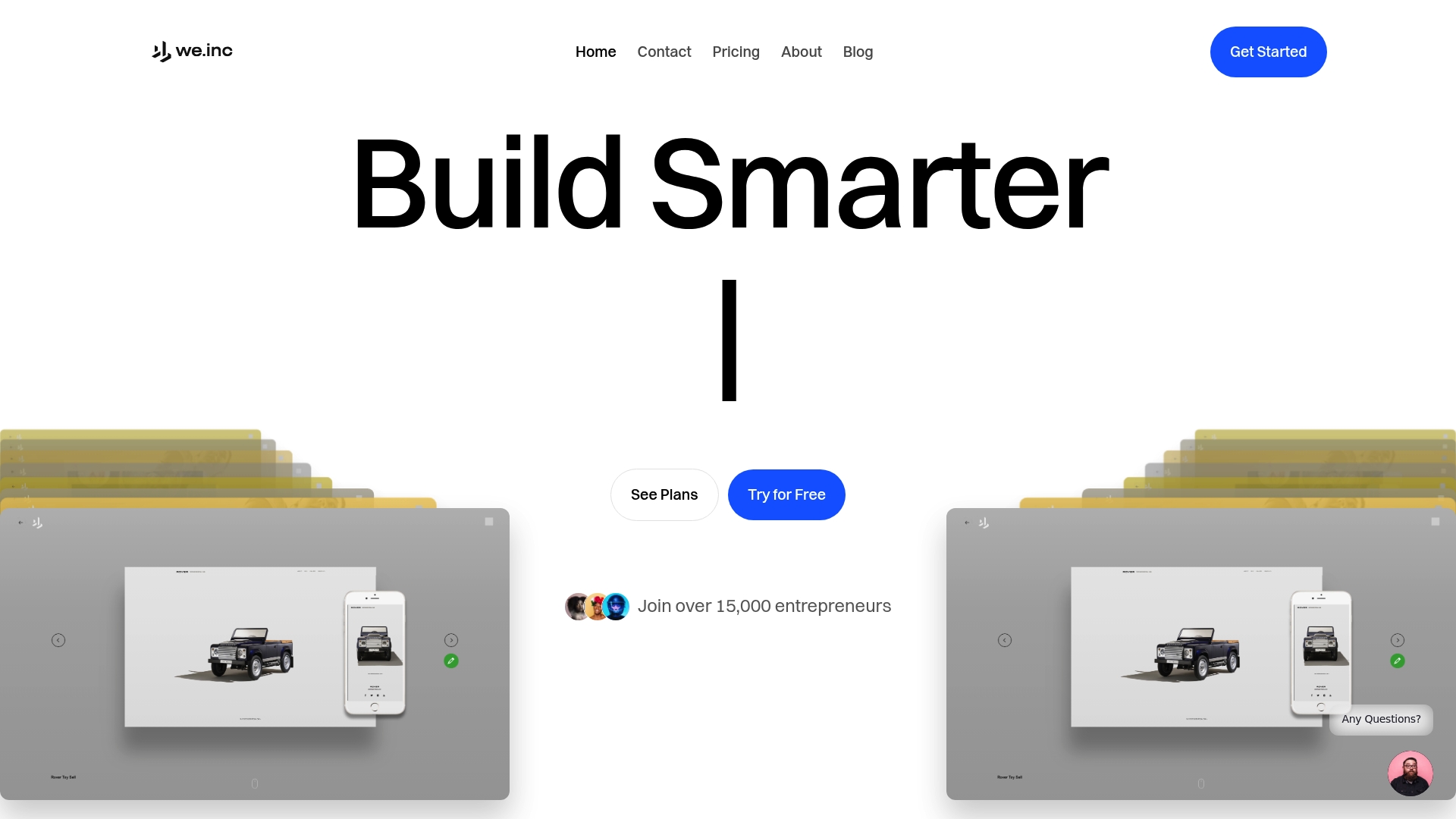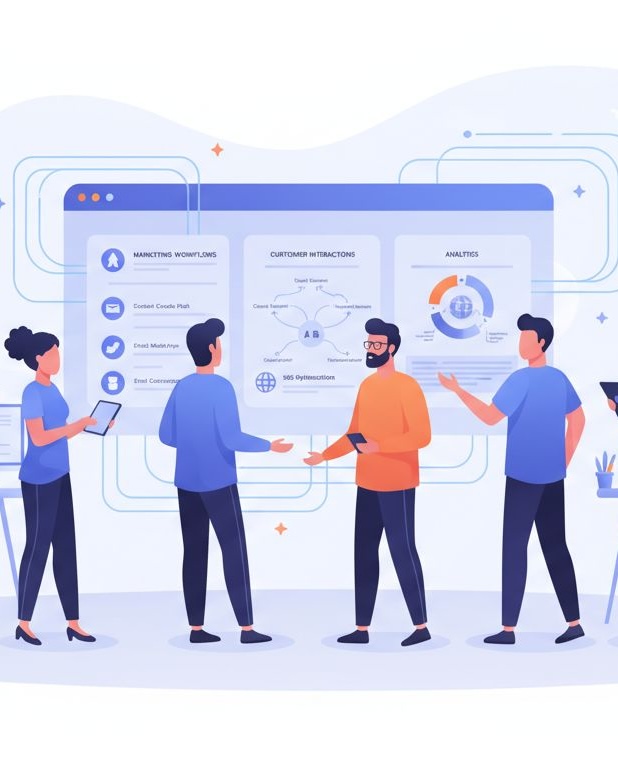What Is Website Conversion? Complete Guide 2024

Did you know that most websites convert less than three percent of their visitors into real customers or leads? That means the vast majority of online traffic leaves without taking meaningful action. Understanding website conversion is key for anyone who wants their site to do more than just attract casual clicks. By focusing on measurable actions and optimizing each visitor’s journey, business owners can turn passive views into real results that support growth.
Table of Contents
- Defining Website Conversion And Its Purpose
- Types Of Website Conversions Explained
- How Website Conversion Works In Practice
- Key Metrics And Tools For Measuring Conversion
- Best Practices For Boosting Website Conversion
- Common Conversion Mistakes To Avoid
Key Takeaways
| Point | Details |
|---|---|
| Understanding Conversion | Website conversion transforms casual visitors into engaged customers through defined actions that deliver measurable business value. |
| Types of Conversions | Businesses should differentiate between macro and micro conversions to create strategic digital experiences that guide customer engagement. |
| Measurement Importance | Effective conversion measurement is crucial; businesses must track key metrics to optimize online performance and understand visitor behavior. |
| Best Practices | Balancing design simplicity, user experience, and optimizing for mobile are key strategies to enhance website conversion rates. |
Defining Website Conversion and Its Purpose
Website conversion represents the critical moment when a website visitor completes a desired action that delivers measurable business value. Conversion transforms casual browsing into strategic engagement, turning anonymous web traffic into tangible outcomes like sales, sign-ups, or lead generation.
According to opentextbooks, conversion rate optimization is the systematic process of improving webpages to increase the percentage of visitors who take a specific desired action. Conversions can occur across multiple website pages and are not limited to a single landing page. The key is defining clear, trackable goals that align with your business objectives.
As detailed by catalogimages, a successful conversion requires three fundamental elements:
- A predefined action with clear business value
- Ability to track and measure the specific conversion
- A quantifiable outcome (either directly calculated or estimated from historical data)
For entrepreneurs and digital marketers, understanding website conversion means recognizing that not all website visits are equal. Each interaction represents an opportunity to guide potential customers through a strategic journey - transforming passive browsing into active engagement that drives business growth. By implementing targeted conversion strategies, businesses can systematically improve their online performance and turn website traffic into meaningful results.
Learn how to build an agency website that converts fast to maximize your digital potential.
Types of Website Conversions Explained
Website conversions are not a one-size-fits-all concept. Different businesses and digital platforms have unique goals that translate into various conversion types, each representing a strategic milestone in the customer journey.
According to opentextbooks, conversion goals extend far beyond traditional sales transactions. Potential conversion actions include:
- Submitting a contact form
- Clicking specific links
- Reaching a particular website page
- Spending a defined time on the site
- Viewing a certain number of pages
Catalogimages further breaks down website conversions into two critical categories:
- Macro Conversions: Primary, high-value actions such as:
- Completing a product purchase
- Signing up for a free trial
- Submitting a comprehensive lead generation form
- Micro Conversions: Intermediate steps that indicate potential customer interest:
- Downloading informational materials
- Adding items to a shopping cart
- Clicking through to important pages
- Completing a single step in a multi-step process
Understanding these conversion types allows businesses to create more nuanced, strategic digital experiences that guide potential customers through a deliberate engagement pathway. By tracking both macro and micro conversions, companies can optimize their websites to incrementally improve overall conversion rates.

Here is a summary comparing macro and micro conversions:
![]()
| Conversion Type | Example Actions | Business Impact |
|---|---|---|
| Macro Conversions | Purchase Free trial sign-up Lead form |
Direct revenue Main KPI |
| Micro Conversions | Download resource Add to cart Click important page |
Indicate interest Support nurturing |
Learn more about website automation strategies to enhance your digital conversion potential.
How Website Conversion Works in Practice
Website conversion is a strategic process that transforms casual website visitors into engaged customers through a carefully designed digital journey. It’s not about random clicks, but a purposeful navigation that guides potential customers toward a specific, valuable action.
According to Wikipedia, in e-commerce, the conversion funnel represents the consumer’s journey through an online advertising or search system, ultimately culminating in a purchase. This journey transforms a site visitor into an actual buyer, tracking each critical interaction and touchpoint.
Key Components of the Conversion Path:
- Awareness Stage: Attracting initial visitor attention
- Interest Stage: Engaging visitors with compelling content
- Consideration Stage: Providing detailed information and value
- Decision Stage: Facilitating the final conversion action
- Retention Stage: Encouraging repeat interactions
Wikipedia further explains that a conversion path typically involves a series of strategic page transitions. This journey begins when a user lands on a specific page and progresses through carefully designed interactions, ultimately reaching a positive outcome like a purchase or a negative outcome like an abandoned session.
Practically, this means creating a website that anticipates user needs, removes friction, and provides clear, compelling pathways to conversion. Every element - from navigation design to call-to-action placement - plays a crucial role in guiding visitors toward your desired outcome.
Check out our step-by-step website launch guide to transform your digital strategy and optimize conversion potential.
Key Metrics and Tools for Measuring Conversion
Effective conversion measurement is the cornerstone of digital marketing success. Without precise tracking, businesses are essentially navigating in the dark, unable to understand or improve their online performance.
According to Wikipedia, web analytics is the comprehensive process of measuring, collecting, analyzing, and reporting web data to understand and optimize online usage. This approach provides critical insights into:
- Number of website visitors
- Total page views
- User behavior profiles
- Traffic and popularity trends
Key Conversion Metrics Every Business Should Track:
- Conversion Rate: Percentage of visitors completing desired actions
- Bounce Rate: Percentage of visitors leaving without interaction
- Average Session Duration: Time spent on website
- Cost per Acquisition: Total marketing spend divided by conversions
- Exit Pages: Last pages visitors view before leaving
Wikipedia highlights that modern conversion tracking leverages two primary technological approaches:
- JavaScript Trackers: Real-time quantitative action recording
- Pixel Trackers: Alternative tracking method for environments where JavaScript is disabled
These tracking methods enable businesses to measure media performance against key performance indicators (KPIs), transforming raw data into actionable strategic insights. The goal isn’t just collecting numbers, but understanding the story behind those metrics.
Learn more about building a business website step by step to implement effective conversion tracking strategies.
Best Practices for Boosting Website Conversion
Website conversion is a delicate balance between design, user experience, and strategic communication. Success requires understanding how subtle changes can dramatically impact visitor behavior and engagement.
Research from arXiv reveals a critical insight: there’s a “sweet spot” between user experience and visual intensity that maximizes conversion while minimizing negative user responses. The study demonstrates that simply increasing visual complexity can backfire, with negative reactions growing faster than potential conversions.
Key Conversion Optimization Strategies:
- Visual Design Balance
- Create clean, intuitive interfaces
- Avoid overwhelming graphic elements
- Ensure visual hierarchy guides user attention
- User Experience Optimization
- Streamline navigation paths
- Reduce friction in conversion process
- Create clear, compelling call-to-action buttons
- Device and Browser Compatibility
- Ensure responsive design across devices
- Optimize loading speed
- Test functionality on multiple browsers
arXiv further emphasizes the importance of cross-device optimization, highlighting significant variations in exit rates and conversion performance across different devices and browsers. Mobile optimization, in particular, emerges as a critical factor in improving overall conversion rates.
Practically, this means continuously testing and refining your website’s design, ensuring each element serves a clear purpose and guides visitors toward your desired conversion goal. Small, incremental improvements can compound into significant performance gains.
Explore AI marketing strategies for digital growth to take your conversion optimization to the next level.
Common Conversion Mistakes to Avoid
Digital marketers and entrepreneurs often unknowingly sabotage their website’s conversion potential by making critical strategic errors that drive potential customers away. Understanding these pitfalls is the first step toward creating a more effective online presence.
Research from arXiv highlights a crucial insight: negative user responses escalate faster than potential conversions when website design becomes overly complex. This means that well-intentioned attempts to make a website visually impressive can actually repel visitors instead of attracting them.
Top Conversion-Killing Mistakes:
- Overcomplicated Design
- Cluttered visual layouts
- Too many competing elements
- Lack of clear visual hierarchy
- Poor Mobile Experience
- Non-responsive design
- Slow loading times
- Difficult navigation on smaller screens
- Weak Call-to-Action
- Unclear conversion goals
- Passive or vague button language
- Insufficient prominence of action buttons
arXiv further confirms the critical nature of mobile optimization, revealing significantly higher exit rates on mobile devices and performance variations across different browsers. This underscores the importance of creating a seamless, intuitive experience regardless of how users access your website.
The key is striking a delicate balance between aesthetic appeal and functional simplicity. Every design element should serve a clear purpose, guiding visitors smoothly toward your desired conversion outcome without overwhelming or confusing them.
Learn how to build an agency website that converts fast and avoid these common conversion-killing mistakes.
Transform Website Visitors Into Loyal Customers With Smart Tools
You understand the frustration of having website traffic but struggling to convert visitors into meaningful actions. The article highlights how crucial conversion rate optimization is through clear goals and seamless user journeys. Now imagine having a powerful platform that simplifies building high-converting websites without any coding and automates your marketing effortlessly. With challenges like balancing design, reducing friction, and adapting to different devices, it can feel overwhelming to create an optimized conversion path on your own.

Take control of your digital growth with We.inc. Our all-in-one SaaS platform is crafted for entrepreneurs and agencies ready to accelerate results by creating stunning websites fast, engaging visitors with AI-powered chatbots, and automating social media management from a single dashboard. Avoid common mistakes like overcomplicated design or weak calls-to-action by leveraging tools designed to maximize conversions effectively. Don’t wait to start turning browsers into buyers and leads. Explore how to build an agency website that converts fast and follow our step-by-step website launch guide to launch your success today.
Frequently Asked Questions
What is website conversion?
Website conversion is the moment a visitor on a website completes a desired action, such as making a purchase or signing up for a newsletter, that contributes measurable business value.
What are macro and micro conversions?
Macro conversions are high-value actions like completing a purchase or signing up for a free trial, while micro conversions are smaller, yet significant actions that indicate user interest, such as downloading materials or adding items to a shopping cart.
Why is conversion rate optimization important for my website?
Conversion rate optimization (CRO) is essential as it systematically improves your website to increase the percentage of visitors who take desired actions, leading to higher engagement and business growth.
What metrics should I track to measure website conversion success?
Key metrics include conversion rate, bounce rate, average session duration, cost per acquisition, and exit pages, which help assess user behavior and website performance.
%20(1).svg)

